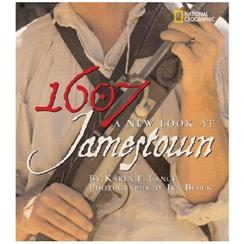I’ve seen the Batman movie – twice.
First, let me echo the cautionary words I have read elsewhere – this is NOT a movie for children. It’s PG-13 for a reason and I would not for a moment consider taking a child less than 13 to see it.
 Several reviewers (notably, Sam Thielman in World Magazine) have noted the startling, disturbing, and powerful performance of Heath Ledger as the Joker. Thielman observes that he’s not playing the Joker, “He’s playing Satan. Ledger flicks his tongue like a snake, tempts people to kill one another, and is gleefully sloppy with bullets, bombs, and knives. Everyone else plays gangland archetypes; Ledger’s Joker has escaped to the movies from Milton, or C.S. Lewis’ Perelandra.”
Several reviewers (notably, Sam Thielman in World Magazine) have noted the startling, disturbing, and powerful performance of Heath Ledger as the Joker. Thielman observes that he’s not playing the Joker, “He’s playing Satan. Ledger flicks his tongue like a snake, tempts people to kill one another, and is gleefully sloppy with bullets, bombs, and knives. Everyone else plays gangland archetypes; Ledger’s Joker has escaped to the movies from Milton, or C.S. Lewis’ Perelandra.”
If the Joker is Satan, then Batman is … ? No, he’s not Jesus. And yet, there are some striking details in the way Batman is portrayed which one does not expect to find in a comic book super-hero.
Batman is the hero, but the script does not ask us to admire him because he’s stronger, wiser, faster, or has better gadgets. Instead, the writers, (Christopher Nolan, Jonathan Nolan, and David Goyer) portray Batman as the vigilante who longs for the day when he is no longer needed. Batman is not Jesus, but he is the anti-Joker. This concept is explicitly played with in several scenes.
The Joker has no political agenda, no long-term goals. That, indeed, is one of the things that makes him so terrifying, and so dangerous. The Joker in fact, has no identity. No fingerprint matches, no DNA matches, no ID, no labels in his clothes. His only demand is that Batman should unmask himself. Alfred rebukes Bruce Wayne, who thinks the Joker is just another criminal, with the observation that “Some men aren’t looking for anything logical. They can’t be bought, bullied, reasoned or negotiated with. Some men just want to watch the world burn.”
It is this acknowledgement – that there is real evil in the world – that is part of what makes The Dark Knight a different kind of movie.
The other part is that Batman triumphs, not because he’s stronger, but because he’s willing to deny himself. He’s willing to be the outcast. He’s willing to be rejected by the citizens of Gotham, if that’s what it takes to protect Gotham. He’s willing to be blamed for things he didn’t do, if it will preserve hope.
The Joker strives desperately to prove that everyone, in the end, is as evil as he is. That he’s not mad, he’s just “ahead of the curve.” He tempts, toys, and manipulates everyone – and proves, over and over again, that they can be corrupted – but he fails to corrupt Batman. It is Batman’s rejection of the temptation of the Joker that makes him the victor. And there are some surprising heroes in other places, as well.
Most of the movie is loud and violent, and there are sections of dialogue that are maddeningly difficult to hear (especially the final voice-over). But they are worth listening to. Alfred (Michael Cain) and Lucius (Morgan Freeman) are the wise men in Bruce Wayne’s life. They give him good advice. But in the end, Batman must find the strength of character alone to resist the Joker.
The movie satisfies, because Batman decides to be the Hero that Gotham needs – even though he must pay a terrible personal cost.
Lots of people are going to see this movie. It represents a tremendous opportunity to talk about issues of great significance. Leadership, integrity, service, self-denial, the reality of evil and the importance of self-sacrifice are all themes that are touched on. There have not been many movies that raised those issues, and so I commend the film-makers.
But don’t take the kids.











 The second DK book is constructed on the same pattern as
The second DK book is constructed on the same pattern as 






 Several reviewers (notably,
Several reviewers (notably,